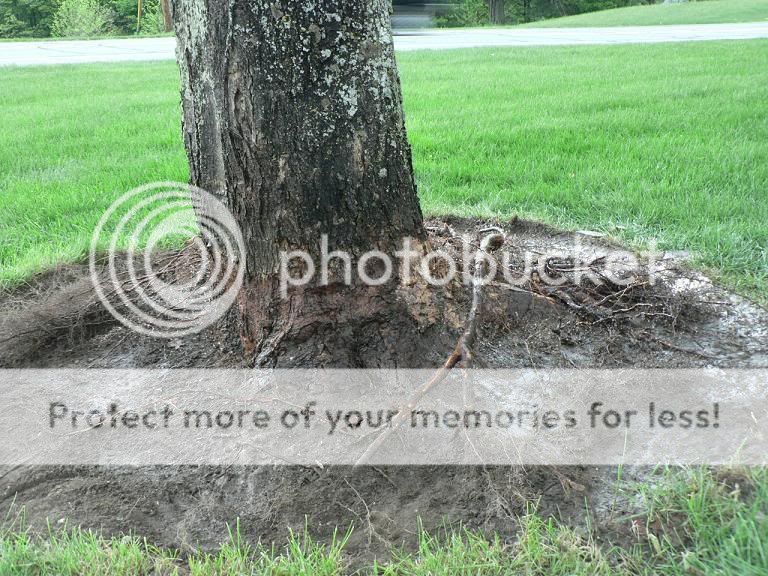mrkartoom
ArboristSite Lurker
First off sorry if this is already a heavily discussed topic. . .
Not knowing any better I built a planter around the base of a maple tree in my front yard about 5-6 years ago. The tree is about 20" in diameter and the planter was about 16" deep and 5' in diameter.
It looked nice, but the last couple of years my maple has been dying. It started in the top and center of the tree. What was once a beautiful, full tree is now thin and very late to bud this year. I had one person tell me a couple years ago it was from fungus here in the northeast and I have noticed similar problems with the adjacent maple, but not nearly as bad as this one.
Recently I had an arborist tell me it was my planter and to remove it if the bark was not rotted. I have taken as much of the planter awaty as I dare because I have found many .5 to 1" size roots in there and many very tiny ones as well. I can't tell if the bark is rotted or not, but it certainly looks different than that above the dirt level.
My question is what should I do and can this tree be saved? I did read a thread where roots this size were removed and of little consequence. I'm not sure of I should go back to orignal ground level and mulch around it or fill the dirt back in over all these new roots and affected bark and then mulch, or something else. Not sure if pics would help and I haven't taken any yet.
Any ideas or information on what I should do if anything would be greatly appreciated. Hopefully it can be saved.:help:
Thanks,
John
Not knowing any better I built a planter around the base of a maple tree in my front yard about 5-6 years ago. The tree is about 20" in diameter and the planter was about 16" deep and 5' in diameter.
It looked nice, but the last couple of years my maple has been dying. It started in the top and center of the tree. What was once a beautiful, full tree is now thin and very late to bud this year. I had one person tell me a couple years ago it was from fungus here in the northeast and I have noticed similar problems with the adjacent maple, but not nearly as bad as this one.
Recently I had an arborist tell me it was my planter and to remove it if the bark was not rotted. I have taken as much of the planter awaty as I dare because I have found many .5 to 1" size roots in there and many very tiny ones as well. I can't tell if the bark is rotted or not, but it certainly looks different than that above the dirt level.
My question is what should I do and can this tree be saved? I did read a thread where roots this size were removed and of little consequence. I'm not sure of I should go back to orignal ground level and mulch around it or fill the dirt back in over all these new roots and affected bark and then mulch, or something else. Not sure if pics would help and I haven't taken any yet.
Any ideas or information on what I should do if anything would be greatly appreciated. Hopefully it can be saved.:help:
Thanks,
John













